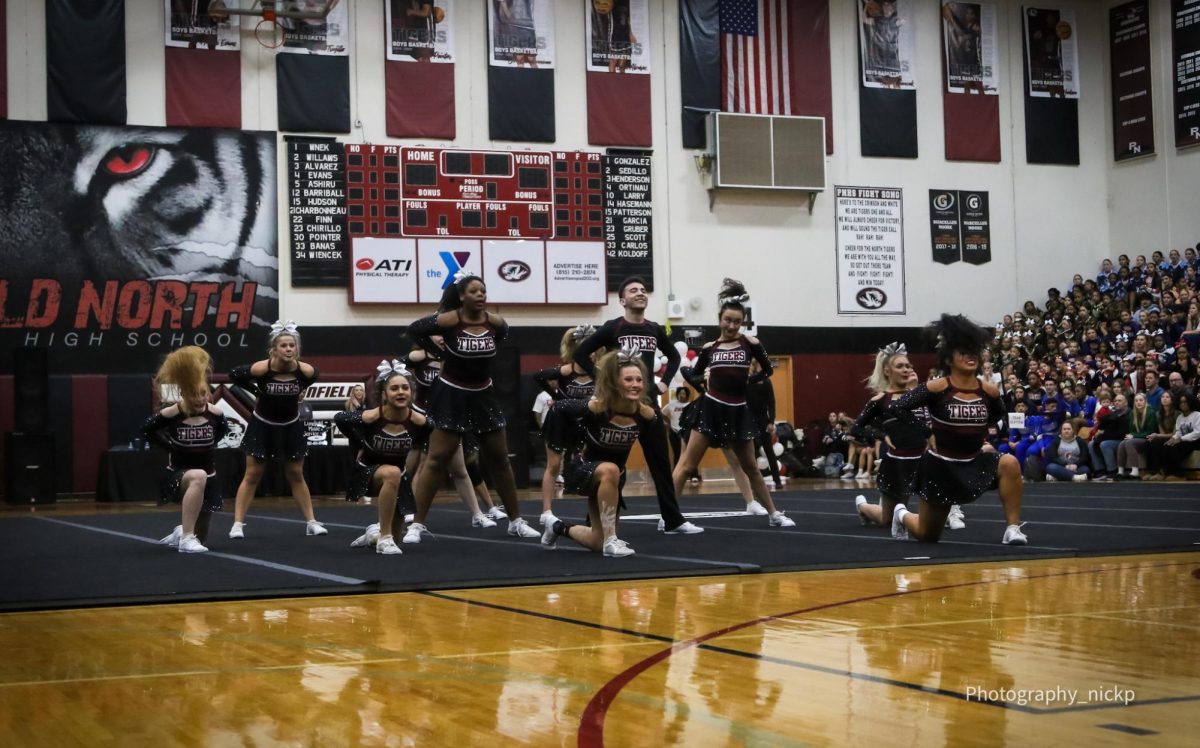Audrey’s Outlook
Decoding the outdated dress code
September 1, 2015
The song “Pants on the Ground” by “General” Larry Platt was released on American Idol five years ago in protest of sagging.
For four of those years I have watched that same video as a part of the welcome assembly and each year it becomes increasingly clearer that it is not the only element that is out of date about the district dress code policy.
Each year male students have been advised to not sag their pants or wear shirts with offensive emblems in order to create a safe and professional working environment while women must contend with a much longer list of expectations.
When students wearing muscle tanks and shirts bearing the phrase “cool story babe now go make me a sandwich” make it through the to the end of the school day without so much as a trip to the office, the idea of a professional learning environment becomes irrelevant.
In no way would a pair of rip knee jeans or a t-shirt (an acceptable outfit by the dress codes standard) be allowed in said working environment so it begs the question, “What sort of goal are these bans striving to realize?”
In short, they create a school where alongside the two major reprimands for the male student body, women are given a list that scrutinizes every possible offense their clothes could elicit.
There is a long gap between a teenage girl and a working adult woman however it seems that misogynistic working environment mentality is being instilled early on via dress code standards.
Women are held strictly to more severe expectations while expectations for other students are less plentiful as well as less enforced.
The fact of the matter is, high school students are not adults and they are constantly reminded of this fact, it is no wonder that the attempt to force poorly prepared adult standards upon them goes awry.
From elementary school onwards I’ve been taught that my shorts must reach mid-thigh and my tank top straps must be three fingers wide but without explanation as to why.
What is too sexual, unprofessional, or distracting about a young girls shoulder that it should so disrupt a classroom to the point of chaos?
Why must she sacrifice her time in the classroom to sit in the office and wait for a “more appropriate” change of clothes?
The student handbook states under the section “Dressing and Grooming” that “students’ attire is expected to cover them from shoulder to mid-thigh. Arms may be exposed… Clothing is to be worn as it was intended to be worn. Examples include, but are not limited to, shirts rolled up above the waist or pants rolled down below the waist to expose the midriff. Pants/shorts are to cover undergarments and stay above the hip at all times.”
Women are told that it is uncomfortable for administrators, both male and female alike, to tell students that their clothing is not covering enough of what must be covered but no one will state the real reason why it should be.
It is already clear that the environment dress code creates does not properly strive towards work ready students on the male front so in the case of women the line become blurred between good intent and the perpetuation of rape culture.
Prompted by recent events at the Woodford County high school, Senior student Maggie Sunresi created a 33-minute film entitled, “Shame: A Documentary on School Dress Code.”
Sunresi told The Huffington Post in a recent interview that she believes dress code, “has little to do with clothing and more to do with the underlying message behind a code that tells young women to cover up and young boys that they can’t control themselves.”
She believes that the dress code is sexist towards both boys and girls in that it, “perpetuates the notion that a woman’s body is inherently more sexual than a man’s body, and that young boys’ natural tendencies are to harass or assault women.”
What is so inherently sexual about the female midriff or mid-thigh that male students, or worse, adult administrators, cannot concentrate on the task at hand?
I suppose it’s all about context but of what sort. What sort of place does the dress code strive to create?
Sitting in front of my computer staring at the phrase “shoes with rollers are not allowed” on page 62 of the District 202 student handbook I have a hard time believing it is at the very least a modern work environment.






